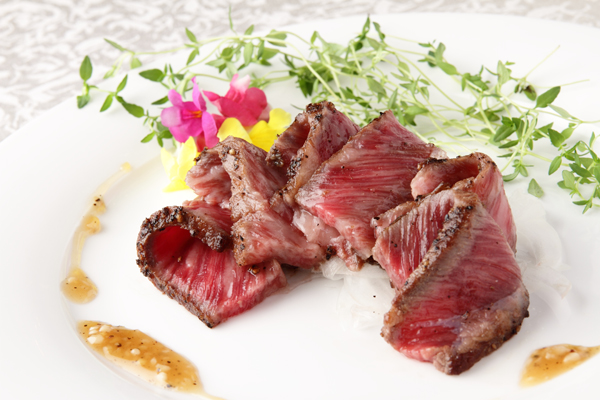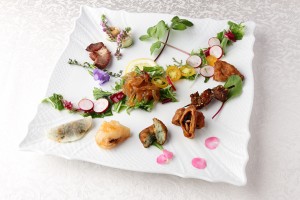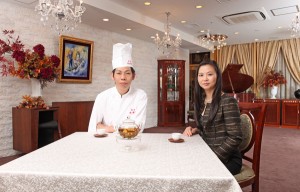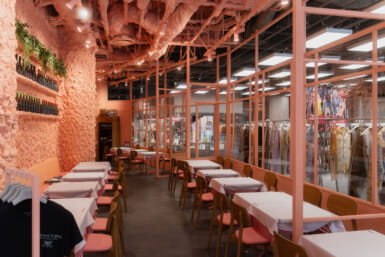Higankaku Ginza: Chinese food with a difference
Imagine, as most people will when they think of Chinese, that circular rotating tray in the middle of the table, the ‘Lazy Susan’, with a huge selection of oily food.” says Hiro Fujimoto, the owner of Higankaku as we chat before I head over to Ginza. “Now forget it. Our restaurant is totally different.”
That huge rotating disc of dishes was so beloved of diners in the 70s and 80s when Chinese food started to take off in the west and, sometimes, it works. Chinese food is for sharing, Chinese food is for mixing and dividing and tasting and getting the tablecloth dirty with. Or so I thought.
Here at Higankaku, you will not see the Lazy Susan. The tables are square and the waiters and waitresses will serve your dishes one by one, focusing on the strengths of each and its place in your course. It feels almost French in style but seems to work, and work well.
The interior is balanced somewhere between classical French and high class Chinese restaurant to and the formal service seems to suit. Jackets all round is the dress-code it feels worth it.
The order of proceedings does not mean lack of choice. A carefully treated preserved egg and strictly selected dried mullet roe were highlights of an impressive dish with no fewer than nine appetizers which started us off and let me know what I was in for.
This was not Chinese food from the high street.
Nine delicately different colours, shapes, textures and tastes on one dish felt like an update which I didn’t know was necessary to the cuisine, but they worked. It was quite a variety.
Next up was Xiaolong bao, a type of steamed dumpling with ultra thin skin which you need to eat so carefully that the restaurant even provides a small explanatory slip of paper. Again, order is key: put it in a white ceramic spoon, carefully break the delicate thin skin, taste the soup inside, and only then, when the juice is already on the back of your tongue should you bite it.
Well, I did as I was told and I would do it again – if only to savour each flavour and enjoy once more the layers that make them up.
Then, Peking duck. Usually, crispy duck skin, spring onion and pancake are served seperately but here, Higankaku serves one piece of duck, already wrapped with a delicately balanced level of piquant sauce that made me lick my lips somehow just enough.
“Usual Peking Duck is too big a portion for just an appetizer, but we don’t want people to miss out on such an important part of our cuisine, so we serve the very best part for you, once,” Fujimoto says.
Fujimoto also runs a company that produces foodstuffs, ingredients and seasonings and supplies top class restaurants and luxury hotels, and she seems passionate about showcasing all of the best parts here in Higankaku while passing on value to its diners.
With dishes such as the Matsuzaka beef I tried served with flair and finesse, the place feels like it opened up a whole new world of cuisine to me.
Daisen Chicken and a shiitake soup rounded off the meal by bringing some satisfyingly homely Chinese flavours to the table before Seafood noodles filled in any gaps.
That most unfamiliar of feelings after a Chinese feast – a healthy satisfaction which meant a guilt-free dessert could follow – was as welcome as it was unexpected. The whole meal felt fresh, and lacked any of the heavy oiliness one might have expected.
We ate to be satisfied, not stuffed, which is exactly what Higankaku was aiming for.
Prices range from 7,350 yen per person at lunch and evening courses start at 10,500 yen for the Crystal course. Weekender ate a selection from the lowest priced dinner course. Drinks extra. Higankaku in part sponsored this article.
Higankaku Ginza
Address: 9F Jewel Box Ginza, 8-9-15 Ginza, Tokyo.
Tel: 03-3572-7111
Web: www.higankaku.com
To see this piece as it appeared in our magazine, click here and flip to page 23.











